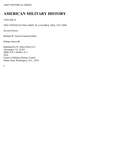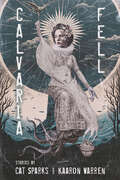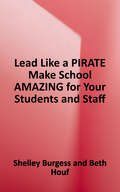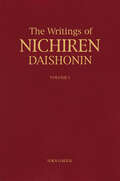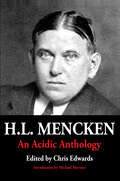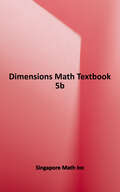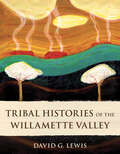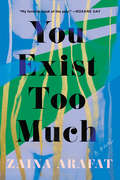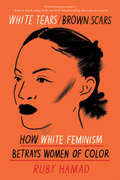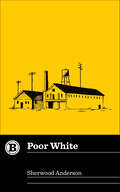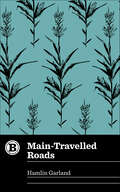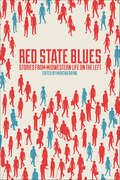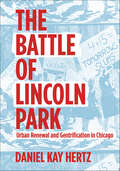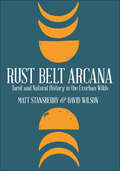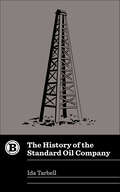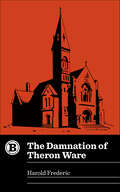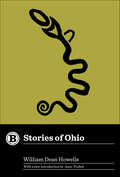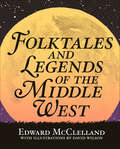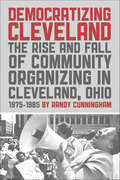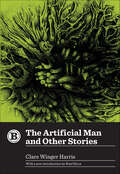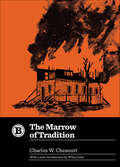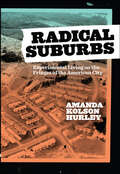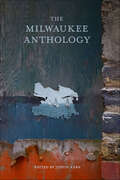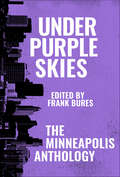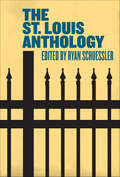- Table View
- List View
American Military History Volume 2: The United States Army In A Global Era, 1917-2008
by Richard StewartThe story of the United States Army is always growing and changing. Historians constantly seek to reinterpret the past while accumulating new facts as America’s Army continues to be challenged on new foreign battlefields. Nor does the Army, as an institution, ever stand still. It necessarily changes its organization, materiel, doctrine, and composition to cope with an ever-changing worldof current conflict and potential danger. Thus, the Center of Military History is committed topreparing new editions of American Military History as we seek to correct past mistakes, reinterpretnew facts, and bring the Army’s story up to date. This new edition of that textbook, an importantelement in soldier and officer education since 1956, seeks to do just that.This edition of American Military History builds on the previous edition, published in 2005, andexpands its coverage to include an analysis of the wars in Afghanistan and Iraq up to January 2009.This expanded section is necessarily only an initial survey of the first eight years of the war onterrorism; it is far from the final word on the subject. It may take an additional decade or more to collect sufficient documents, interviews, memoirs, and other sources to know the details of military and political planning, the implementation of those plans on the global battlefield, and the impact on the Army as an institution and on the nation. The events of the past eight years are more like current events than they are history. History—the detailed telling of a story over time based upon all the extant evidence—requires more time to find and analyze the documents and facts and bring to bear on that evidence the insight that comes only from perspective. However, today’s soldiers need their story told. The events in which they participate and in which they are such important elements need to be given some form and order, no matter how tentative. The Army continues to be the nation’s servant, and the soldiers that make up that Army deserve their recognition. They continue to protect our freedom at great personal risk to themselves and incalculable cost to their loved ones.This is their continuing story.
Calvaria Fell: Stories
by Kaaron Warren Cat SparksCalvaria Fell is a stunning collaborative collection of weird tales from two acclaimed authors, Kaaron Warren and Cat Sparks. It features previously published stories from both authors, along with a new novella by Kaaron Warren and four new stories by Cat Sparks.The collection offers a glimpse into a chilling future world that is similar to our own. Readers will be drawn into experiences at once familiar and bizarre, where our choices have far-reaching consequences and the environment is a force to be reckoned with.The title of the collection tethers these stories to a shared space. The calvaria is the top part of the skull, comprising five plates that fuse together in the first few years of life. Story collections work like this; disparate parts melding together to make a robust and sturdy whole. The calvaria tree, also known as the dodo tree, adapted to being eaten by the now-extinct dodo bird; its seeds need to pass through the bird' s digestive tract in order to germinate. In a similar way, the stories in Calvaria Fell reflect the idea of adaptation and the consequences of our actions in a changing world.Calvaria Fell is a haunting and thought-provoking collection that will linger in readers' minds long after the final page has been turned.
Lead Like a Pirate: Make School Amazing for Your Students and Staff
by Shelley Burgess Beth HoufAre You a Treasure Seeker? Pirates are on a constant quest for riches, but PIRATE Leaders seek even greater rewards: amazing schools, engaged students, and empowered educators who know they are making a difference. <P><P>In Lead Like a PIRATE, education leaders Shelley Burgess and Beth Houf map out the character traits necessary to captain a school or district. You'll learn where to find the treasure that's already in your classrooms and schools—and how to bring out the very best in your educators. - What does it take to be a PIRATE Leader? - Passion--both professional and personal - A willingness to Immerse yourself in your work - Good Rapport with your staff, students, and community - The courage to Ask questions and Analyze what is and isn't working - The determination to seek positive Transformation - And the kind of Enthusiasm that gets others excited about education <P><P>The ultimate goal for any education leader is to create schools and districts where students and staff are knocking down the doors to get in rather than out. This book will equip and encourage you to be relentless in your quest to make school amazing for your students, staff, parents, and communities. Are you ready to set sail?
The Writings of Nichiren Daishonin
by Soka GakkaiAn authoritative translation of 172 of Nichiren's writings presented in chronological order. The collection includes Nichiren's five major works as well as other treatises setting forth his doctrine, writings remonstrating with government officials, and letters offering advice, encouragement, or consolation to believers. The translations are based on those of Burton Watson, formerly of Columbia University and an award-winning translator of Chinese and Japanese literature. Edited by the Soka Gakkai's Gosho Translation Committee, these are the translations used by English-speaking Soka Gakkai members the world over.
H.L. Mencken: An Acidic Anthology
by Michael Shermer Henry Louis MenckenH.L. Mencken was America's most prominent iconoclastic journalist of the first half of the 20th century, and he still has a considerable following. Mencken's writings have been in print continuously for over 100 years, including a collection published in the 1950s that's still in print almost 70 years after it was first published.This is the first new collection of Mencken's writings to appear in decades, and it consists primarily of complete pieces rather than excerpts from his newspaper and magazine articles. The focus is on writings that are relevant to the present day, that are biting, insightful, and that showcase Mencken's trademark dark humor. Topics include American politics, evangelical Christianity, the South, the Scopes trial, sex, morals, Prohibition, civil liberties, war, quack cures, American literature, and American journalism.
Dimensions Math Textbook 5B
by Singapore Math Inc Various RolesThe Dimensions Math® Pre-Kindergarten to Grade 5 series is based on the pedagogy and methodology of math education in Singapore. The curriculum develops concepts in increasing levels of abstraction, emphasizing the three pedagogical stages: Concrete, Pictorial, and Abstract. Each topic is introduced, then thoughtfully developed through the use of problem solving, student discourse, and opportunities for mastery of skills.
Tribal Histories of the Willamette Valley
by David G. LewisFrom oral history to written word, learn about the history of Oregon through the stories of the Indigenous peoples of the Willamette Valley. The Willamette Valley is rich with history—its riverbanks, forests, and mountains home to the tribes of Kalapuya, Chinook, Molalla, and more for thousands of years. This history has been largely unrecorded, incomplete, poorly researched, or partially told. In these stories, enriched by photographs and maps, Oregon Indigenous historian David G. Lewis combines years of researching historical documents and collecting oral stories, highlighting Native perspectives about the history of the Willamette Valley as they experienced it. The timeline spans the first years of contact between settlers and tribes, the takeover of tribal lands and creation of reservations by the US Federal Government, and the assimilation efforts of boarding schools. Lewis shows the resiliency of Native peoples in the face of colonization. Undoing the erasure of these stories reveals the fuller picture of the colonization and changes experienced by the Native peoples of the Willamette Valley absent from other contemporary histories of Oregon.
You Exist Too Much: A Novel
by Zaina ArafatA &“provocative and seductive debut&” of desire and doubleness that follows the life of a young Palestinian American woman caught between cultural, religious, and sexual identities as she endeavors to lead an authentic life (O, The Oprah Magazine).On a hot day in Bethlehem, a 12–year–old Palestinian–American girl is yelled at by a group of men outside the Church of the Nativity. She has exposed her legs in a biblical city, an act they deem forbidden, and their judgement will echo on through her adolescence. When our narrator finally admits to her mother that she is queer, her mother&’s response only intensifies a sense of shame: &“You exist too much,&” she tells her daughter.Told in vignettes that flash between the U.S. and the Middle East—from New York to Jordan, Lebanon, and Palestine—Zaina Arafat&’s debut novel traces her protagonist&’s progress from blushing teen to sought–after DJ and aspiring writer. In Brooklyn, she moves into an apartment with her first serious girlfriend and tries to content herself with their comfortable relationship. But soon her longings, so closely hidden during her teenage years, explode out into reckless romantic encounters and obsessions with other people. Her desire to thwart her own destructive impulses will eventually lead her to The Ledge, an unconventional treatment center that identifies her affliction as &“love addiction.&” In this strange, enclosed society she will start to consider the unnerving similarities between her own internal traumas and divisions and those of the places that have formed her.Opening up the fantasies and desires of one young woman caught between cultural, religious, and sexual identities, You Exist Too Much is a captivating story charting two of our most intense longings—for love, and a place to call home.
White Tears/Brown Scars: How White Feminism Betrays Women of Color
by Ruby HamadCalled “powerful and provocative" by Dr. Ibram X. Kendi, author of the New York Times bestselling How to be an Antiracist, this explosive book of history and cultural criticism reveals how white feminism has been used as a weapon of white supremacy and patriarchy deployed against Black and Indigenous women, and women of color.Taking us from the slave era, when white women fought in court to keep “ownership” of their slaves, through the centuries of colonialism, when they offered a soft face for brutal tactics, to the modern workplace, White Tears/Brown Scars tells a charged story of white women’s active participation in campaigns of oppression. It offers a long overdue validation of the experiences of women of color.Discussing subjects as varied as The Hunger Games, Alexandria Ocasio–Cortez, the viral BBQ Becky video, and 19th century lynchings of Mexicans in the American Southwest, Ruby Hamad undertakes a new investigation of gender and race. She shows how the division between innocent white women and racialized, sexualized women of color was created, and why this division is crucial to confront.Along the way, there are revelatory responses to questions like: Why are white men not troubled by sexual assault on women? (See Christine Blasey Ford.) With rigor and precision, Hamad builds a powerful argument about the legacy of white superiority that we are socialized within, a reality that we must apprehend in order to fight."A stunning and thorough look at White womanhood that should be required reading for anyone who claims to be an intersectional feminist. Hamad’s controlled urgency makes the book an illuminating and poignant read. Hamad is a purveyor of such bold thinking, the only question is, are we ready to listen?" —Rosa Boshier, The Washington Post
Poor White (Belt Revivals)
by Sherwood AndersonHugh McVey moves from Missouri to the agrarian town of Bidwell, Ohio. He invents a mechanical cabbage planter to ease the burden of famers, but an investor in town exploits his product, which fails to succeed. His next invention, a corn cutter, makes him a millionaire and transforms Bidwell into a center of manufacturing. McVey, perennially lonely and ruminative, meets Clara Butterworth, who attends college at nearby Ohio State and is perennially harassed by her potential matches. Published one year after Winesburg, Ohio, in 1920, Poor White has a modernist style, an realist attention to every day life, and an eerily contemporary resonance.
Main-Travelled Roads: Being Six Stories Of The Mississippi Valley - Scholar's Choice Edition (Belt Revivals)
by Hamlin GarlandMain-Travelled Roads collects 11 short stories, originally published in 1891, set in Wisconsin, Iowa, and Minnesota, or what Hamlin Garland called the “Middle Border.” Depicting an agrarian life of exploitation, misogyny, and poverty, Garland's radical, realist stories refute romantic conceptions of the rural Midwest. Unrelenting yet strangely hopeful in its view of how things ought to be, this collection is gripping, hard-hitting, and surprisingly beautiful.
Red State Blues: Stories from Midwestern Life on the Left
by Martha BayneMuch has been made of the 2016 electoral flip of traditionally Democratic states like Michigan, Wisconsin, Pennsylvania, and Ohio to tip Donald Trump into the presidency. Countless think pieces have explored this newfound exotic constituency of blue voters who swung red. But what about those who remain true blue? Red State Blues speaks to the lived experience of progressives, activists, and ordinary Democrats pushing back against simplistic narratives of the Midwest as "Trump Country." They've been there all along, and as the essays in this collection demonstrate, they're not leaving anytime soon. With contributions by journalist and scholar Sarah Kendzior, Kenyon College president Sean Decatur, Pittsburgh city councilman Dan Gilman, and more.
The Battle of Lincoln Park: Urban Renewal and Gentrification in Chicago
by Daniel Kay Hertz"A brief, cogent analysis of gentrification in Chicago ... an incisive and useful narrative on the puzzle of urban development."-- Kirkus Reviews In the years after World War II, a movement began to bring the m
Rust Belt Arcana: Tarot and Natural History in the Exurban Wilds
by Matt Stansberry David WilsonAn insightful take on the Tarot through the lens of the industrial Midwest, and a beautiful piece of nature writing in its own right. What can the Tarot tell us about the flora and fauna of the industrial Midwest? In what ways might this ancient practice connect us to the Rust Belt today? Rust Belt Arcana uses the Tarot’s time-tested structure to answer these questions, juxtaposing the characteristics of the cards with the creatures and plants that surround us every day. The 22 idiosyncratic essays here—one for every card in the Major Arcana—bridge biology, natural history, and the human condition. They tell stories of abundance and loss, and they remind us of the Rust Belt’s persistent remnant wilderness, a landscape often dismissed as unremarkable. A magical book both for Tarot enthusiasts and for those who are seeking to see beauty in a beleaguered landscape and define their remarkable place within it.
The History of the Standard Oil Company (Belt Revivals)
by Ida TarbellPart of Belt's Revivals Series, a classic of muckraking journalism with a new introduction by Elizabeth Catte, author of What You Are Getting Wrong About Appalachia and Pure America . Cleveland oil tycoon Jo
The Damnation of Theron Ware: Or, Illumination (Belt Revivals)
by Harold FredericFirst published in 1896, this unsung masterpiece of American literature details the rise and fall of a Methodist minister in upstate New York. Part of Belt's Revivals series and with a new introduction by Ruth Graham. Th
Stories of Ohio (Belt Revivals)
by William Dean HowellsPart of Belt's Revivals Series and with a new introduction by Belt Publishing founder, Anne Trubek. A novelist, critic, and playwright, William Dean Howells was friends with such luminaries as Mark Twain, Henry James, and O
Folktales and Legends of the Middle West
by Edward McClellandAmerica's first superheroes lived in the Midwest. There was Nanabozho, the Ojibway man-god who conquered the King of Fish, took control of the North Wind, and inspired Longfellow's The Song of Hiawatha. Paul Bunyan, the larger-than-life North Woods lumberjack, created Minnesota's 10,000 lakes with his giant footsteps. More recently, Pittsburgh steelworker Joe Magerac squeezed out rails between his fingers, and Rosie the Riveter churned out the planes that won the world's most terrible war. In Folktales and Legends of the Middle West, Edward McClelland collects these stories and more. Readers will learn the sea shanties of the Great Lakes sailors and the spirituals of the slaves following the North Star across the Ohio River, and be frightened by tales of the Lake Erie Monster and Wisconsin's dangerous Hodag. A history of the region as told through its folklore, music, and legends, this is a book every Midwestern family should own.
Democratizing Cleveland: The Rise and Fall of Community Organizing in Cleveland, Ohio 1975–1985
by Randy CunninghamDemocratizing Cleveland: The Rise and Fall of Community Organizing in Cleveland, Ohio, 1975-1985 is the result of almost fifteen years of research on a topic that has been missing from local works on Cleveland history: the community organizing movement that put neighborhood concerns and neighborhood voices front and center in the setting of public policies in the late 1970s and early 1980s. Originally published in 2007 by Arambala Press, this important work is being reprinted by Belt Publishing for a new generation of activists, planners, urbanists, and organizers.
The Artificial Man and Other Stories (Belt Revivals)
by Clare Winger HarrisA new collection from a trailblazing writer of science fiction. Part of Belt's Revival Series and with an introduction by Brad Ricca. Science fiction has historically been seen as a man's game, but from the very beginni
The Marrow of Tradition: Large Print (Belt Revivals #0)
by Charles W. ChesnuttPart of Belt's Revivals Series and an undisputed classic of African American literature. With a new introduction by Wiley Cash ( When Ghosts Come Home ). On November 10, 1898, a mob of 400 people rampaged through the
Radical Suburbs: Experimental Living on the Fringes of the American City
by Amanda Kolson HurleyAmerica’s suburbs are not the homogenous places we sometimes take them for. Today’s suburbs are racially, ethnically, and economically diverse, with as many Democratic as Republican voters, a growing population of renters, and rising poverty. The cliche of white picket fences is well past its expiration date. The history of suburbia is equally surprising: American suburbs were once fertile ground for utopian planning, communal living, socially-conscious design, and integrated housing. We have forgotten that we built suburbs like these, such as the co-housing commune of Old Economy, Pennsylvania; a tiny-house anarchist community in Piscataway, New Jersey; a government-planned garden city in Greenbelt, Maryland; a racially integrated subdivision (before the Fair Housing Act) in Trevose, Pennsylvania; experimental Modernist enclaves in Lexington, Massachusetts; and the mixed-use, architecturally daring Reston, Virginia. Inside Radical Suburbs you will find blueprints for affordable, walkable, and integrated communities, filled with a range of environmentally sound residential options. Radical Suburbs is a history that will help us remake the future and rethink our assumptions of suburbia.
The Milwaukee Anthology (Belt City Anthologies)
by Justin KernThe Milwaukee Anthology is a book on hope and hurt in one of America's toughest ZIP codes. In these pages are the stories of a Grecian basketball superstar in the making against an unlikely backdrop; of Sikh temple services that carry on after one of America's most notorious mass shootings; of an astronaut's wish for kids in the same school halls where he formed a dream of space. You won't find Summerfest or Laverne and Shirley herein, but you will find Riverwest, Sherman Park, and the South Side; Hmong New Year's shows, 7 Mile Fair, and the Rolling Mill commemoration. Edited by Justin Kern, with personal essays, narratives, poems, Q&A's, and art from more than 50 contributors including Dasha Kelly, Pardeep Kaleka, and Michael Perry, it's a book about a place on the lake that can make you say "yes" and wonder "why" in the same thought.
Under Purple Skies: The Minneapolis Anthology (Belt City Anthologies)
by Frank BuresIn recent years, Minneapolis has become one of America’s literary powerhouses. With over fifty poems and essays, Under Purple Skies: The Minneapolis Anthology collects some of the most exciting work being done in, or about, Minneapolis and the Twin Cities area, with narrative threads that stretch back not just to Scandinavia, but across the world. Edited by Frank Bures (The Geography of Madness), the writers included here have won, or been shortlisted for, the Newbery Award, the Man Booker Prize, the Pulitzer, the Caldecott Award, the National Book Award, the Minnesota Book Award, and many others.
The St. Louis Anthology (Belt City Anthologies)
by Ryan SchuesslerSt. Louis is a fragmented place. It’s physically dissected by rivers, highways, walls, and fences, but it’s also a place where one’s race, class, religion, and zip code may as well be cards in a rigged poker game, where the winners’ prize is the ability to ignore the fact that the losers have drastically shorter life expectancies. But it can also be a city of warmth, love, and beauty―especially in its contrasts. Edited by Ryan Schuessler (Sweeter Voices Still: An LGBTQ Anthology from Middle America), the collection features nearly 70 essays penned by St. Louis writers, journalists, clerics, poets, and activists including Aisha Sultan, Galen Gritts, Vivian Gibson, Maja Sadikovic, Nartana Premachandra, Sophia Benoit, Robert Langellier, Samuel Autman, Umar Lee, and more.
